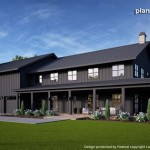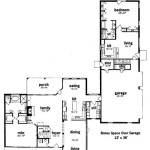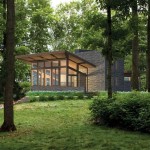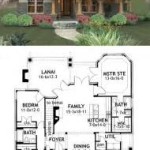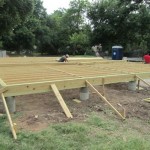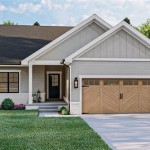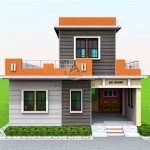Plans to Build a Tiny House: Comprehensive Guidelines 2024
The tiny house movement, characterized by a conscious decision to downsize living spaces, continues to gain momentum in 2024. Driven by factors like financial freedom, environmental concerns, and a desire for a simpler lifestyle, more individuals and families are exploring the possibility of building their own tiny homes. This article provides comprehensive guidelines for those contemplating such a project, covering crucial aspects from initial planning to final construction.
Building a tiny house is not simply a scaled-down version of conventional construction. It requires meticulous planning, understanding of local regulations, and adherence to specific building techniques tailored for smaller spaces. This guide aims to equip aspiring tiny house builders with the knowledge needed to navigate the process successfully.
Understanding the Foundation: Planning and Design
The initial phase of building a tiny house revolves around careful planning and design. Without a well-defined plan, the project can quickly become overwhelming and costly. This stage involves several key considerations.
First, define your needs and lifestyle. How many people will be living in the tiny house? What are your essential living requirements? Do you work from home and require dedicated office space? Answering these questions will help determine the necessary square footage and layout of the tiny house. Consider storage needs, cooking habits, and accessibility requirements for all occupants.
Next, research local zoning regulations and building codes. Tiny house regulations vary significantly from jurisdiction to jurisdiction. Some areas may have specific minimum size requirements for dwellings, restrictions on the placement of tiny houses, or require them to be built on a permanent foundation. Failure to comply with local regulations can lead to legal issues and costly penalties. Contact your local planning department to obtain information about applicable regulations and permitting requirements.
After understanding the regulatory landscape, it's time to develop a detailed design for your tiny house. This includes creating floor plans, elevations, and structural drawings. You can either hire an architect or designer to assist with this process or use online resources and software to design the house yourself. When designing, consider the use of space-saving features such as multi-functional furniture, vertical storage solutions, and efficient appliances.
Choose between building on a foundation or a trailer. Building on a foundation offers more stability and permanence but requires adherence to traditional building codes. Building on a trailer provides mobility, allowing you to move the tiny house as needed. However, trailer-based tiny houses may be subject to different regulations and weight restrictions. Carefully evaluate the pros and cons of each option before making a decision.
Finally, create a realistic budget and timeline for the project. Building a tiny house can be significantly less expensive than building a traditional house, but it still requires a substantial investment. Research the cost of materials, labor (if you plan to hire contractors), permits, and other expenses. Develop a detailed timeline for each stage of the project, from design and permitting to construction and finishing. Be prepared to adjust your budget and timeline as needed, as unexpected challenges may arise.
Construction Fundamentals: Materials and Techniques
Once the planning and design are complete, the next phase involves the physical construction of the tiny house. This requires a thorough understanding of building materials and techniques applicable to smaller structures.
Select appropriate building materials. Common materials for tiny house construction include wood framing, steel framing, SIPs (Structural Insulated Panels), and reclaimed materials. Wood framing is a traditional and readily available option, but it requires proper insulation to ensure energy efficiency. Steel framing offers greater strength and durability but may be more expensive. SIPs provide excellent insulation and structural performance but can be more challenging to work with. Reclaimed materials can be a cost-effective and environmentally friendly option but require careful inspection and preparation.
Prioritize energy efficiency. Due to their small size, tiny houses are relatively easy to heat and cool. However, proper insulation and ventilation are crucial to maintain a comfortable indoor environment and minimize energy consumption. Use high-quality insulation materials in the walls, roof, and floor. Install energy-efficient windows and doors. Consider incorporating passive solar design principles to maximize natural light and warmth in the winter and minimize heat gain in the summer.
Implement proper plumbing and electrical systems. Tiny houses require a functional plumbing system for water supply, wastewater disposal, and sanitation. Consider using composting toilets or low-flow fixtures to conserve water. Properly install electrical wiring, outlets, and lighting fixtures. Use energy-efficient appliances to reduce electricity consumption. If the tiny house is off-grid, consider incorporating solar panels, batteries, and a generator for electricity generation and storage. Ensure all plumbing and electrical work complies with local codes and regulations.
Ventilation is important to implement. Proper ventilation is essential to prevent moisture buildup and mold growth in a tiny house. Install exhaust fans in bathrooms and kitchens to remove excess moisture. Consider using a whole-house ventilation system to circulate fresh air throughout the house. Ensure adequate air circulation to prevent condensation and maintain a healthy indoor environment.
Pay attention to structural integrity. Even though tiny houses are smaller than traditional houses, they still need to be structurally sound and capable of withstanding wind, snow, and seismic loads. Use appropriate framing techniques and fasteners to ensure the structural integrity of the walls, roof, and floor. If building on a trailer, properly secure the frame and ensure it is capable of supporting the weight of the house.
Interior Design and Functionality: Maximizing Space
The final phase of building a tiny house involves interior design and functionality. The goal is to create a comfortable and functional living space within a limited footprint. This requires careful planning and attention to detail.
Optimize space utilization. Tiny houses require clever use of space to maximize functionality. Use multi-functional furniture, such as sofa beds, folding tables, and storage ottomans. Incorporate vertical storage solutions, such as shelves, drawers, and cabinets, to utilize wall space. Design the layout to minimize wasted space and create a sense of openness. Consider using loft spaces for sleeping or storage to free up floor space. Utilize every nook and cranny to maximize storage potential.
Choose appropriate appliances and fixtures. Select appliances and fixtures that are specifically designed for small spaces. Consider using compact refrigerators, combination washer/dryers, and induction cooktops. Choose low-profile sinks, toilets, and showerheads to save space. Prioritize energy-efficient appliances to minimize energy consumption. Choose durable and easy-to-clean materials for countertops, flooring, and walls.
Incorporate natural light. Natural light can make a small space feel larger and more inviting. Install large windows and skylights to maximize natural light. Use light-colored paint and finishes to reflect light throughout the house. Avoid blocking windows with furniture or curtains. Consider using mirrors to reflect light and create the illusion of space.
Personalize the space. Once the basic construction is complete, personalize the tiny house to reflect your individual style and preferences. Choose colors, fabrics, and accessories that create a comfortable and inviting atmosphere. Incorporate personal touches, such as artwork, photos, and mementos, to make the house feel like home. Plant a small garden or add outdoor seating to extend the living space outdoors.
Consider accessibility and aging in place. If you plan to live in the tiny house for an extended period, consider incorporating features that promote accessibility and aging in place. Widen doorways and hallways to accommodate wheelchairs or walkers. Install grab bars in bathrooms and showers. Choose lever-style door handles instead of knobs. Consider installing a ramp or lift to access the tiny house if it is elevated. Plan for future needs and ensure the tiny house is adaptable to changing circumstances.
After considering the interior, carefully plan for the exterior. The exterior cladding should be functional, aesthetically pleasing and durable. Consider materials like wood siding, metal siding, or even unique sustainable materials like reclaimed wood or bamboo. The roof requires careful attention; consider a metal roof for longevity and rainwater harvesting potential. Proper flashing and sealing are crucial to prevent leaks. Landscaping, even on a small scale, can enhance the tiny house's appeal and blend it with its surroundings.
Construction also involves careful attention to waste management. Implement strategies to minimize waste during construction. Recycle materials whenever possible. Donate unused materials to local charities or organizations. Properly dispose of hazardous waste materials. Consider using sustainably sourced materials and construction practices to minimize the environmental impact of the project.
Building a tiny house is a significant undertaking that requires careful planning, attention to detail, and a commitment to sustainable living. By following these guidelines, aspiring tiny house builders can successfully create a comfortable, functional, and affordable living space that meets their individual needs and preferences.

How To Choose The Right Tiny Home For You A Comprehensive Guide Central

Designing And Building Your Tiny Farmhouse A Comprehensive Guide

Designing And Building Your Tiny Farmhouse A Comprehensive Guide

Tips For Building The Most Cost Effective Tiny House

Designing And Building Your Tiny Farmhouse A Comprehensive Guide

Portable Shed Tiny Houses Top 10 Benefits Design Tips 2024

Tiny Home Builders In Los Angeles Top Rated Affordable

Tiny House On Wheels Design Tips 10 Essential Guidelines

How To Build A House On Stilts Comprehensive Guide

How To Install A Capsule House Beginner S Guide In 6 Steps Glamni No 1 Manufacturer China
Related Posts

